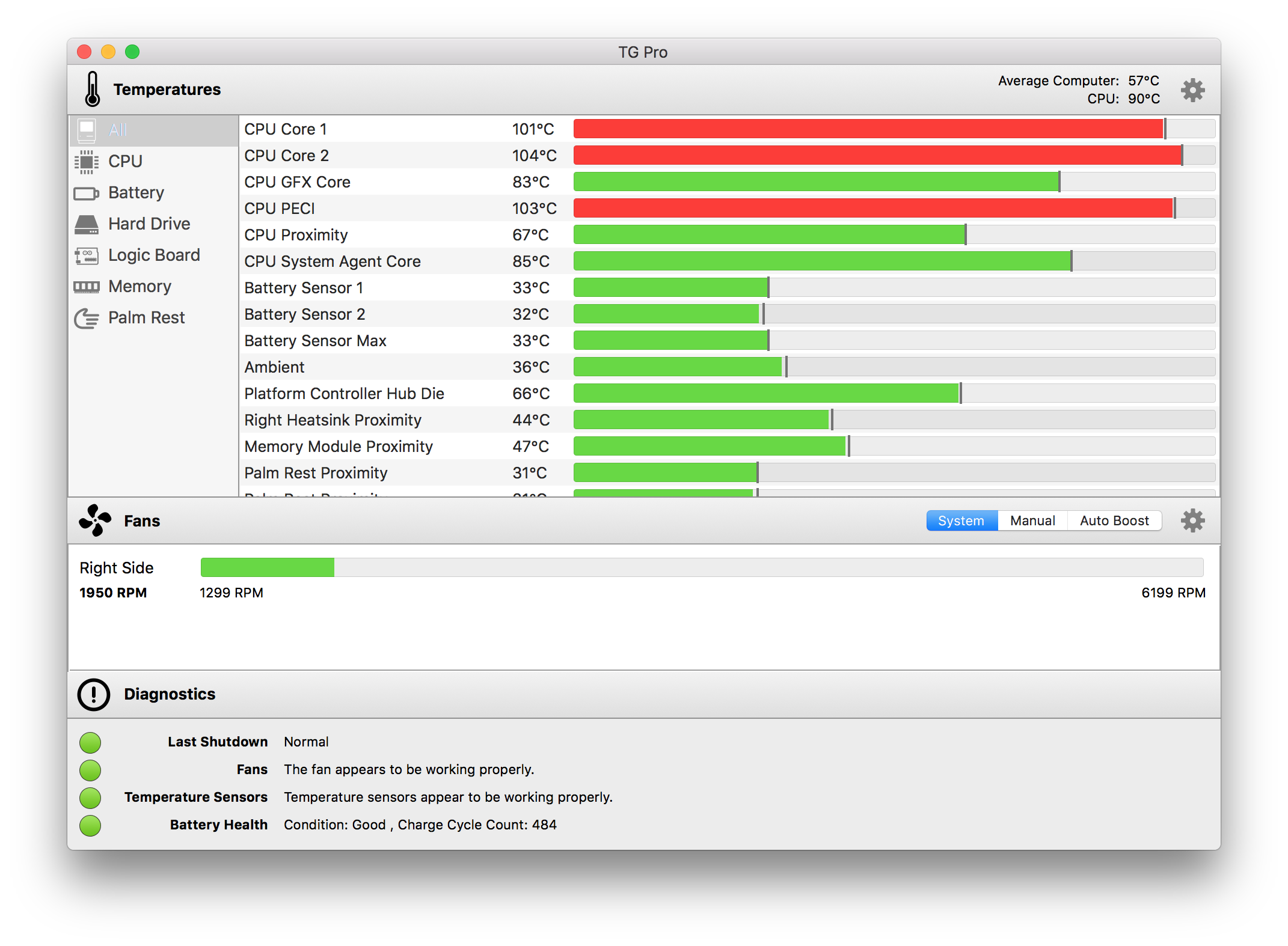About the lithium-ion battery in your Mac notebook
Mac notebook batteries use lithium-ion technology. Lithium-ion batteries charge quickly, are long-lasting, and currently provide the best technology to power your computer.
If, having employed the earlier techniques, you are still concerned about the temperature of your Mac, you could give it a little help by running the fans a little faster. This is done with a small app, SMC fan control, that allows you to manually adjust the minimum speed of the fans – from the default minimum of around 940rpm to 3,800rpm. What is the Best AC Temperature for Sleeping? Although 78⁰ F is a good temperature for energy savings and comfort when you are home and awake, it is not ideal for slumber. In fact, bedroom temperatures that are too hot or too cold can result in a restless night.
All rechargeable batteries are consumable components that become less effective as they get older—and their age isn't determined only by time. A battery's lifespan depends on its chemical age, which is affected by factors such as its temperature history and charging pattern. As your notebook's battery ages chemically, its charging capacity gets smaller.
- Now, Radar Live is a full feature weather app with warning updates for any incoming.
- To get the best medication from your Mary Jane, you want to go as high as possible without actually burning your bud. Set your vape gear at 430 ℉ to get all the good stuff without encroaching on the combustion temperature of 451 ℉. Ideal Temperature For Vaping. If we had to choose one temperature as the ideal for vaping, we’d go with 410 ℉.
- Apple only supplies minimum and maximum ambient temperatures; the specified ambient temperature range for your MacBook 50° to 95° F (10° to 35° C). Unless you're using your MacBook in an abnormally warm environment (i.e. Direct sunlight in a tropical country), your MacBook shouldn't get too much hotter than its regular idle temperatures.
With these tips for maximizing battery performance, you can get the most out of all your Apple devices. And with battery health management, your Mac notebook can take battery optimization even further.
How battery health management helps
The battery health management feature in macOS 10.15.5 is designed to improve your battery's lifespan by reducing the rate at which it chemically ages. The feature does this by monitoring your battery's temperature history and its charging patterns.

Based on the measurements that it collects, battery health management may reduce your battery's maximum charge when in this mode. This happens as needed to ensure that your battery charges to a level that's optimized for your usage—reducing wear on the battery, and slowing its chemical aging.
While battery health management benefits your battery's long-term lifespan, it can also reduce the amount of time your Mac runs on one battery charge when capacity limits are applied. If your priority is making your Mac notebook last as long as possible before recharging, you can turn the feature off.
When battery health management is turned on, your battery's maximum charging capacity might be limited. Although the feature is designed to improve your battery's lifespan, the limited maximum capacity might update your battery status menu to indicate a need for service.
How to control the battery health management feature
Battery health management is on by default when you buy a new Mac notebook with macOS 10.15.5, or after you upgrade to macOS 10.15.5 on a Mac notebook with Thunderbolt 3 ports.

If you want to turn it off, follow these steps:
Mac Temperature Monitor
- Choose System Preferences from the Apple menu , then click Energy Saver.
- Click Battery Health.
- Deselect Battery health management, then click OK.
- Click Turn Off.
Note that turning this feature off might reduce your battery's lifespan.
Learn more
If you feel that your battery isn't lasting as long as it should, you can learn about getting service for your Mac notebook.
Mac notebooks comply with all temperature limits that are set in national and international safety standards. Make sure to follow the user guide instructions regarding safety and handling.
Mac notebooks have sensors that detect temperature changes inside your computer. If your Mac notebook has fans, they turn on automatically to cool critical components.
Here are some tips to manage the operating temperature:
- Make sure that you’ve installed all Mac software updates and all current firmware updates.
- Use your Mac notebook where the ambient temperature is between 50° and 95° F (10° and 35° C). Don’t leave your Mac notebook in your car, because temperatures in parked cars can exceed this range. You should also use your Mac notebook where the relative humidity is between 0% and 95% (noncondensing).
- Use your Mac notebook on a stable work surface that allows for good ventilation. Don’t use your Mac notebook in your bed, on a pillow, or under covers.
- Don’t put anything over the keyboard.
- If your Mac notebook has ventilation openings, don't put anything into them.
- Use only Apple-authorized power adapters. Take steps to avoid overheating the power adapter.
If your Mac notebook gets warm even when it isn’t doing tasks that require intensive calculations, or if it has fans that run for a long time, use Activity Monitor to check CPU activity. Look for malfunctioning processes that can put a significant load on the CPU, and check whether Spotlight is indexing your hard drive. You might also need to reset the System Management Controller (SMC) on your MacBook.
Good Temperature For Orchids
If you use third-party apps that measure the temperature of your notebook computer, it’s important to understand that they don't measure the external case temperature. The case temperature is much lower. Never use third-party apps to diagnose possible hardware issues.
Good Temperature For Mac And Cheese
If you have issues with your Mac notebook’s operating temperature, contact Apple. Or visit an Apple Retail Store or Apple Authorized Service Provider.
